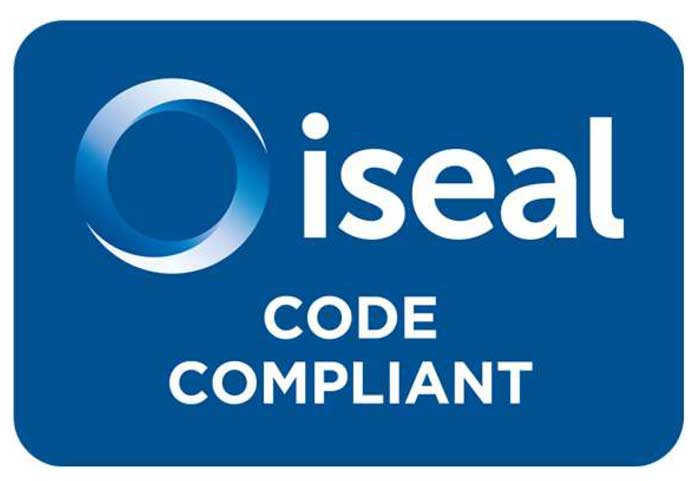Circularity in Aluminium: A Pathway to Climate Mitigation and Resource Efficiency
Circularity in aluminium is not just about recycling; it’s a comprehensive approach that can significantly reduce resource demand and contribute to climate change mitigation.
26 September 2023
The aluminium industry is facing the dual challenge of meeting growing demand while reducing its carbon (and broader) footprint. Traditional approaches, such as increasing recycling rates, are important but insufficient. As the Aluminium Stewardship Initiative (ASI), we propose a more comprehensive solution through our Circularity Framework.
Imagine reducing the sector’s carbon emissions by rethinking the entire lifecycle of a product, from desire to design to disposal. With the aluminium sector responsible for over one billion tonnes of CO2 emissions in 2021, constituting about 4% of the world’s anthropogenic CO2 emissions [1], the need for a circular approach is undeniable. Circularity transcends recycling; it includes various ‘R’ strategies like refusing unnecessary materials, redistributing resources, and rethinking production processes. Implementing these strategies allows us to minimize waste and reduce reliance on primary aluminium, thereby lowering overall CO2 emissions.
Imagine reducing material use by nearly a third simply by making smarter design choices. Implementing circularity measures like extending material lifespan and adopting design-for-disassembly can result in a 28% reduction in material use [2]. For instance, through optimized design and maintenance, the automotive sector could potentially extend the average lifespan of aluminium components. Similarly, design-for-disassembly in the building sector could facilitate more effective material recovery at the end of a building’s life. These are promising avenues for future research and pilot projects that could yield significant material and energy savings.
Moreover, the concept of circularity demands that we look at the complete lifecycle stages of aluminium products. This involves responsible sourcing, production, and end-of-life management. By focusing on the entire lifecycle, we can identify opportunities for resource efficiency that can lead to an additional reduction in CO2 emissions. For instance, businesses can adopt circular models where products are designed to be disassembled, making it easier to reclaim materials. Digital tracking technologies, such as Material or Product Passports, can play an increasing role in optimizing the entire lifecycle of aluminium products, from responsible sourcing to production and end-of-life management, thereby enhancing resource efficiency and sustainability.
The transition to a circular economy contributes directly to climate change mitigation. By 2050, if no improvements are made in circular practices, around 15 million tonnes of aluminium could be lost each year [3]. Recovering these materials enhances the efficiency of the entire aluminium value chain, reducing demand for 15 million tonnes of primary aluminium, emitting on average 250 million tonnes of CO2 annually. Furthermore, reducing the inherent carbon footprint of aluminium at all stages of its lifecycle can lead to even greater CO2 savings [4].
Circularity is not an alternative but a necessity for the aluminium industry. It offers a holistic approach to sustainability, allowing us to meet increasing demand while also contributing to climate change mitigation. It’s a synergistic approach that doesn’t just recycle but rethinks, redesigns, and revolutionizes how we view resource consumption and waste. It is time we move beyond traditional recycling rates and adopt comprehensive circularity measures. As we move forward, let’s not settle for mere incremental changes but embrace the transformative potential that circularity brings to the table.
We invite you to delve deeper into this subject by joining our upcoming webinars and becoming part of the change towards a more sustainable and circular aluminium industry.
Upcoming Webinars:
Join us for our upcoming webinars on aluminium and circularity:
Register now:
- 18 October, 13:00 BST: “Fostering a low-carbon circular economy: Insights from top-down and bottom-up material flow accounting models” with Dr. Romain Billy from NTNU
Upcoming:
- 15 November at 13:00 GMT: “How much sorting is required for a circular low carbon aluminium economy?” with Dr. Julien Pedneault and Prof. Guillaume Majeau-Bettez from Polytechnique Montréal
- 13 December at 12:30 GMT: “Emerging technologies aimed at decarbonising and enhancing the circularity of the aluminium value chain” with Dr. Daniel Cooper, Assistant Professor of Mechanical Engineering at the University of Michigan
References:
[1] IAI. Greenhouse Gas Emissions – Aluminium Sector 2023. https://international-aluminium.org/statistics/greenhouse-gas-emissions-aluminium-sector/ (accessed September 25, 2023).
[2] Circle Economy. The Circularity Gap Report 2021: Solutions for a linear world that consumes over 100 billion tonnes of materials and has warmed by 1-degree. Amsterdam: Circle Economy; 2021.
[3] European Aluminium. Circular Aluminium Action Plan: A Strategy for Achieving Aluminium’s Full Potential for Circular Economy by 2030. Brussels, Belgium: European Aluminium; 2020.
[4] IAI. Aluminium Sector Greenhouse Gas Pathways to 2050. London, UK: International Aluminium Institute; 2021.
SHARE THIS ARTICLE


